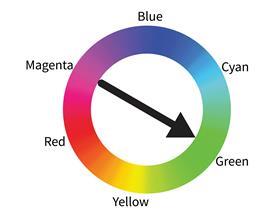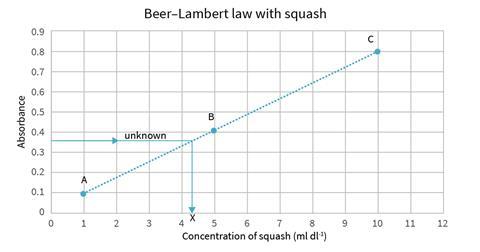Learn about colours and how to use a smartphone, some blackcurrant squash, a filter and a torch to measure changes in concentration across differently diluted squash drinks

We see colour because everything around us absorbs different wavelengths of light, and we can use a colour wheel to help us keep track of what colours are being absorbed. In this activity, learners use a smartphone to measure the amount of light that passes through different concentrations of diluted blackcurrant squash. They will go on to practise skills in graph drawing, manipulating equations and interpreting graphs.
Aside from a smartphone, there is no specialist equipment or chemicals needed, so this can be set for students to try at home with a responsible adult or used as a hands-on classroom experiment or demonstration.
Download the teacher notes below which include a results table and an explanation of the equations needed to produce a straight line graph. Use the results gathered during this practical to work out the unknown concentration of squash in a diluted drink using the Beer–Lambert law.

In this accompanying video, education coordinator John demonstrates the experiment. It touches on many core chemistry concepts such as particle theory, colour, spectroscopy, colorimetry, dilutions and concentrations.
Downloads
Smartphone spectroscopy – Teacher notes
Experiment | Word, Size 0.27 mbSmartphone spectroscopy – Teacher notes
Experiment | PDF, Size 0.3 mb


















1 Reader's comment